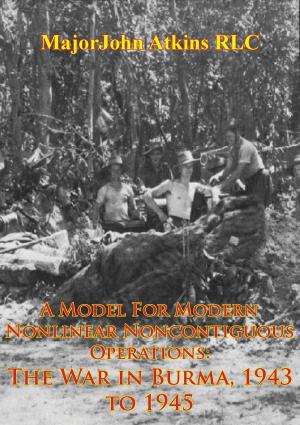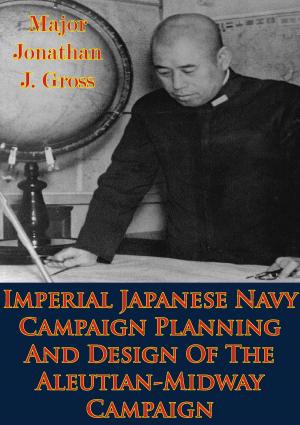Opportunity In Danger: Manstein’s East Front Strategy From 19 November 1942 To 18 March 1943
Nonfiction, History, Germany, European General, Military, United States| Author: | Lt. Steven B. Bolstad USN | ISBN: | 9781786253149 |
| Publisher: | Verdun Press | Publication: | November 6, 2015 |
| Imprint: | Verdun Press | Language: | English |
| Author: | Lt. Steven B. Bolstad USN |
| ISBN: | 9781786253149 |
| Publisher: | Verdun Press |
| Publication: | November 6, 2015 |
| Imprint: | Verdun Press |
| Language: | English |
In the 1990s the United States Armed Forces will be asked by its leaders to do more with less. This represents a significant turn from the policies of the last decade. During World War Two the German Army operated effectively under similar policy constraints. There are many lessons in strategic planning that can be learned from Field Marshal Erich von Manstein’s operations during the Winter of 1942-43. He was able to grasp tremendous opportunity amid extreme strategic danger. He decisively changed the strategic situation on the Eastern Front over a four month period. This thesis addresses the following questions. What factors enabled him to operate so effectively? What hindered him? What decisions did he make, when and why? How might leaders today make similar decisions under similar circumstances and be as successful? The answers to these questions will be of great value to the United States Armed Forces as they restructure themselves for the 1990s.
In the 1990s the United States Armed Forces will be asked by its leaders to do more with less. This represents a significant turn from the policies of the last decade. During World War Two the German Army operated effectively under similar policy constraints. There are many lessons in strategic planning that can be learned from Field Marshal Erich von Manstein’s operations during the Winter of 1942-43. He was able to grasp tremendous opportunity amid extreme strategic danger. He decisively changed the strategic situation on the Eastern Front over a four month period. This thesis addresses the following questions. What factors enabled him to operate so effectively? What hindered him? What decisions did he make, when and why? How might leaders today make similar decisions under similar circumstances and be as successful? The answers to these questions will be of great value to the United States Armed Forces as they restructure themselves for the 1990s.

![Cover of the book Lost Victories: The War Memoirs of Hitler's Most Brilliant General [Illustrated Edition] by Lt. Steven B. Bolstad USN](https://www.kuoky.com/images/2015/november/300x300/9781786257758-yHGy_300x.jpg)








![Cover of the book TORPEDO 8 — The Story Of Swede Larsen’s Bomber Squadron [Illustrated Edition] by Lt. Steven B. Bolstad USN](https://www.kuoky.com/images/2015/november/300x300/9781786251855-SG1X_300x.jpg)
![Cover of the book Marines In World War II - The Battle For Tarawa [Illustrated Edition] by Lt. Steven B. Bolstad USN](https://www.kuoky.com/images/2014/august/300x300/9781782892779-O9WM_300x.jpg)
![Cover of the book Attack Transport; The Story Of The U.S.S. Doyen [Illustrated Edition] by Lt. Steven B. Bolstad USN](https://www.kuoky.com/images/2015/november/300x300/9781786252630-aDmV_300x.jpg)
![Cover of the book Unconditional Surrender, Demobilization and the Atomic Bomb [Illustrated Edition] by Lt. Steven B. Bolstad USN](https://www.kuoky.com/images/2016/july/300x300/9781786259431-ZuRR_300x.jpg)
![Cover of the book Marines In World War II - Okinawa: Victory In The Pacific [Illustrated Edition] by Lt. Steven B. Bolstad USN](https://www.kuoky.com/images/2014/august/300x300/9781782892892-ku83_300x.jpg)
